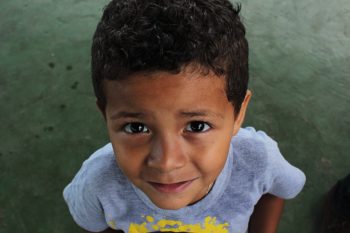 The Imagine Project became a nonprofit a little over 5 years ago. We have grown tremendously in those 5 years, currently reaching over a quarter of a million kids! The journey of starting a nonprofit is always a challenging one with many obstacles and lessons, and we have survived and thrived! The lessons of business are expected, but the powerful lessons of life that the thousands of stories we’ve heard that go far beyond what we had expected. I’d love to share what we’ve learned.
The Imagine Project became a nonprofit a little over 5 years ago. We have grown tremendously in those 5 years, currently reaching over a quarter of a million kids! The journey of starting a nonprofit is always a challenging one with many obstacles and lessons, and we have survived and thrived! The lessons of business are expected, but the powerful lessons of life that the thousands of stories we’ve heard that go far beyond what we had expected. I’d love to share what we’ve learned.
- Every child has a story. When I started The Imagine Project, I thought our expressive writing process would primarily help kids who had faced intense stress and trauma. I quickly learned that stress and trauma are far more prevalent in our society than most realize. Kids of all ages and all walks of life (rich, poor, black, brown, white, urban, and rural) go through difficult life experiences. There might be a kindergartener from a well to do neighborhood who writes about not seeing her parents enough, a 3rd grader who writes about moving, or loss of a pet or grandparent, a middle schooler who has a medical condition that is forever challenging for him, a high school who’s best friend committed suicide or had a drug overdose. The list is far too long to write here but each and every story has an impact on that child’s life—often a negative impact. If they don’t have a chance to talk about it, write about it, process what happened—that negative impact can last a lifetime. Hence they need to be given a simple and easy process to express themselves. Because most children don’t have access to counseling resources, The Imagine Project gives them the opportunity to express, process, and heal among their friends, classmates, and a loving teacher.
- Children are resilient! Wow, the stories of overcoming adversity we’ve heard are truly inspiring! Sitting in a classroom listening to a child tell a story of loss, or a parent being in prison, or even being bullied by a friend; watching them speak their truth and the other kids running over to hug them after, and seeing the child (and/or teen) stand up and feel heard and loved is remarkable. I remember a classroom of 3rd graders who were writing. One little girl’s mom had a miscarriage just weeks before. The little girl began to cry (she cried hard actually) and the other kids didn’t know what to do at first. But eventually, they rallied around her, showing her their love and support, making her feel like she was going to be okay. By the end of the class, she was beaming. Smiling so big you could feel it across the room—she had been heard!
Or the high schooler who sat in front of his classroom talking about his parent’s divorce when he was 3, how hard it had been to not see his dad every day. He spoke and his classmates listened with empathy—allowing him to be heard. He was energized and empowered after—just by speaking his truth.
Teachers are also incredibly resilient too. Teachers write the most amazing Imagine stories! Stories of life challenges that pushed them to do the work they do, or stories that made them the compassionate souls they are today. Tears sometimes flow, but it’s okay because those tears are healing tears—emotions are being released, allowing everyone to let go and move forward.
- Hope is critical to our well-being! Watching a child’s eyes turn from distress to hope, brings joy to everyone’s heart. When a child (or anyone for that matter) talks/writes about a difficult life circumstance, it’s critical to move them into a mindset of possibility. This is why The Imagine Project works so well, it gives kids (and all) hope. Step 4 in The Imagine Project writing process asks the writer to Imagine how they want their story to end? What did they learn from their story? What story do they want instead? Moving them into a hopeful state, teaching them they don’t have to be defined by their story. Like the 5th grader whose parents just got divorced, he realizes he can still spend quality time with his dad, he can have friends in both places, and his parents get along better when they live apart. Or the high schooler who takes her abuse from her childhood and is determined to work to change the system that didn’t serve her, or even the 8th grader who hears another student’s story about having Type 1 diabetes and says he will never tease him—he never understood how hard it was for his classmate—giving all students in the room hope. Kids who hear their classmate’s stories of challenges learn empathy and often believe if someone help can overcome what they’ve been through, they can overcome too! Hope is powerful and it pushes everyone to do more, see more possibility in their lives, even try harder. A critical life lesson we all can use.
Knowing that every child has a story—that resilience and hope can be taught, and are key to a society of children and teens who are heathy and can contribute positively in this world is what keep us going! We continue to let the world know about The Imagine Project and it’s simple, free, and powerful impact it can have on anyone’s life—young or old. Please join us in spreading the word about The Imagine Project—help us reach our 2021 goal of reaching 1 million kids!! We all know the world needs The Imagine Project right now!
Thank you so much and be well.
Happy holidays and cheers to 2021!
Dianne
Dianne is the founder and CEO of The Imagine Project, Inc., a nonprofit organization that helps children K-12 (and adults) process and heal from difficult life circumstances through expressive writing. Dianne has her Masters in Psychiatric/Mental Health Nursing, has written multiple books, is an international speaker, lives outside of Denver, CO, and has 3 grown children. Learn more about The Imagine Project at www.theimagineproject.org.

 Parents, teachers, admin, even grandparents are struggling with the difficult decision of; “Should I send my child back to the classroom setting?” Some believe kids should be back in school, some believe they should stay home, some feel a hybrid choice is the best option. The reality is there isn’t one set answer for all. Many factors need to be taken into account when the final decision is made and administration is doing the best they can to balance the situation at hand.
Parents, teachers, admin, even grandparents are struggling with the difficult decision of; “Should I send my child back to the classroom setting?” Some believe kids should be back in school, some believe they should stay home, some feel a hybrid choice is the best option. The reality is there isn’t one set answer for all. Many factors need to be taken into account when the final decision is made and administration is doing the best they can to balance the situation at hand.
